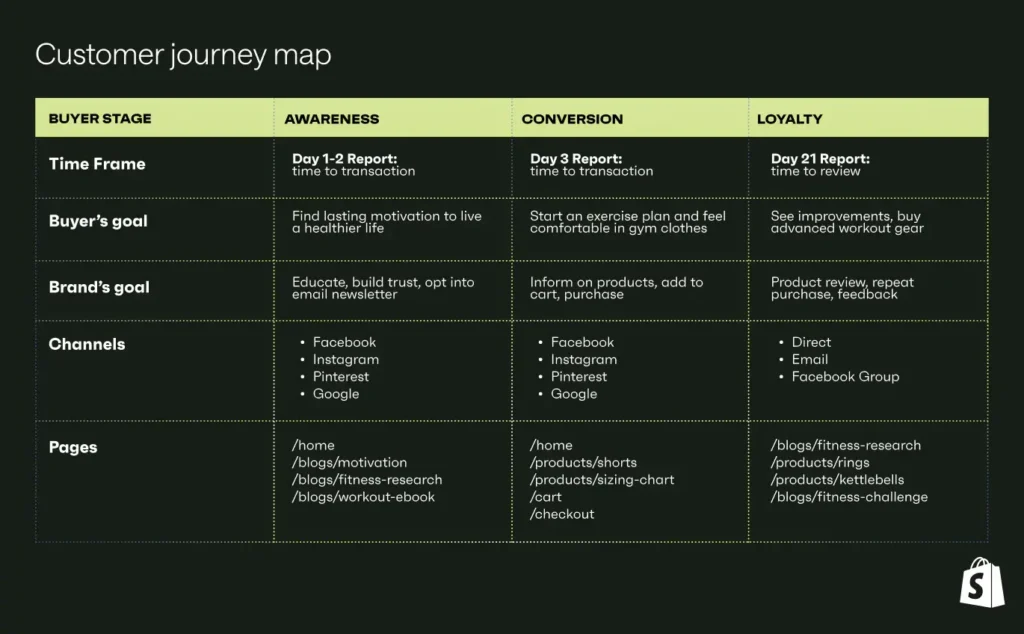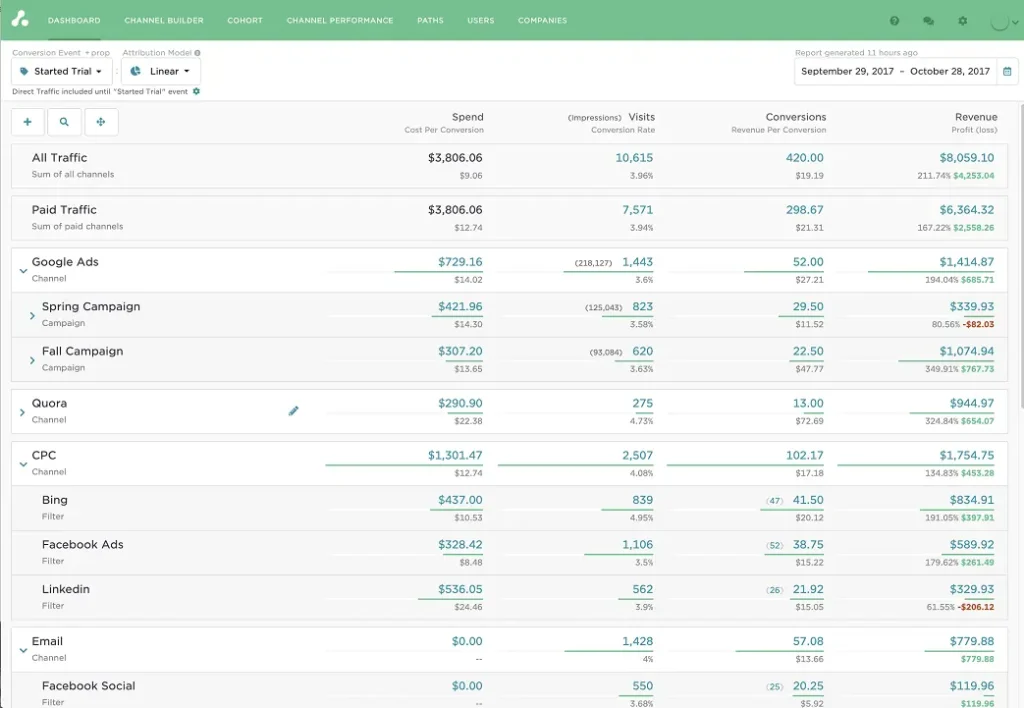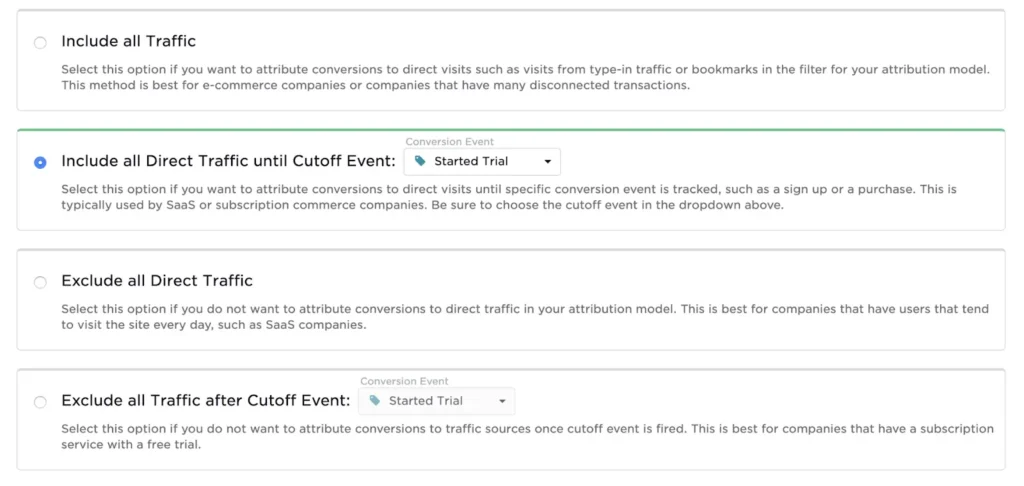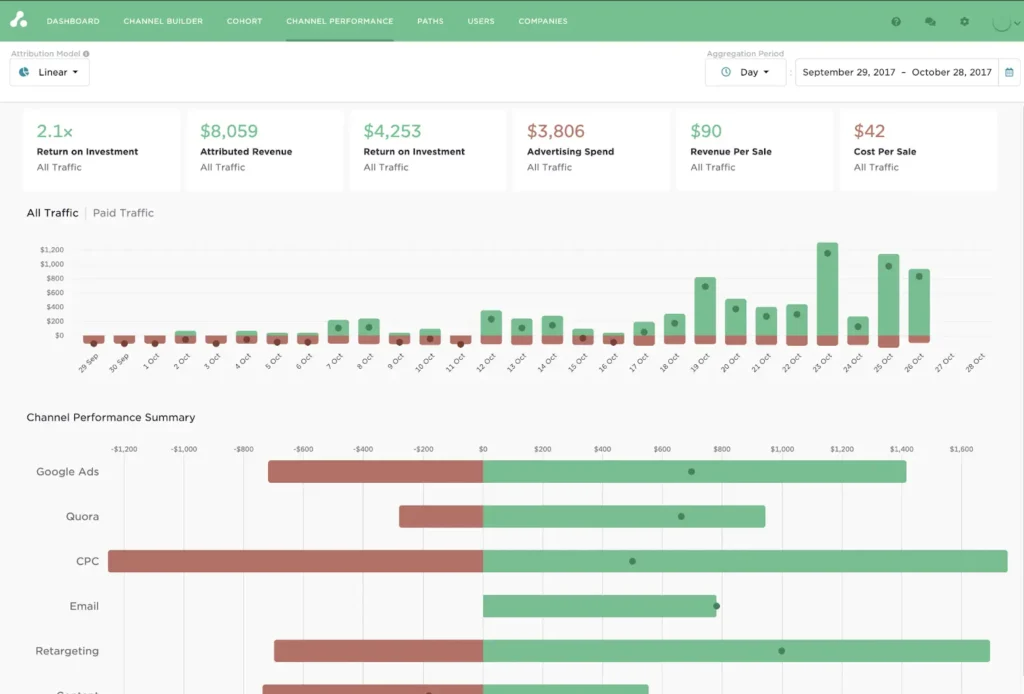When Asos’s profits started to slip after the pandemic boom, the brand faced a turning point—its heavy reliance on last-click promotions was no longer enough to drive sustainable growth. Dan Elton, Asos’ executive VP for customer, was brought in to shift the focus away from bottom-of-the-funnel tactics and to reengage customers throughout the entire journey.
Elton’s mandate was clear: break free from a model that once funneled 85% of media spend into last-click tactics and over-relied on promotions to clear stock.
He recognized that while promotions worked in a high-demand period, they left Asos out of the cultural conversation. So, he pushed for a balanced approach that values every interaction—from the first touchpoint through social ads and influencer partnerships, to nurturing touchpoints that build trust, and finally the decisive moment at checkout.
This narrative isn’t just about numbers. For E-Commerce businesses, it’s a real-life lesson in understanding your customers at every step—and placing conversion value accordingly.
Key Takeaways:
- E-Commerce attribution is about unlocking the secret sauce behind every interaction, from that first spark to the final sale.
- By mapping every touchpoint of your online customer journey, you turn fragmented data into a battle plan that drives smarter spending and explosive growth.
- With multi-touch attribution, you can create a data-driven marketing strategy that transforms digital noise into measurable growth.
What is E-Commerce Attribution And Why Should You Care?
E-Commerce attribution is the process of unraveling which marketing efforts—be it ads, emails, or social media campaigns—directly drive your sales. By mapping the customer or buyer’s journey and assigning credit to each touchpoint, it reveals which channels deliver real value and which ones just add noise.
What makes e-commerce attribution especially challenging is the non-linear, multi-channel nature of online shopping. Unlike traditional retail where a single interaction might seal the deal, today’s customers engage with brands across a host of digital platforms—social media, email, retargeting, and website visits—often across multiple devices.
This complexity means you need attribution models that can integrate data from diverse sources, tackle issues like cross-device tracking and privacy regulations, and still provide clear, actionable insights to optimize your marketing spend and boost the bottom line—in other words, for revenue attribution.
What Does The Typical E-Commerce Customer Journey Look Like?

Example E-Commerce customer journey map by Shopify
The E-Commerce customer journey is a layered, dynamic process that captures how a shopper’s relationship with your brand evolves over time. It typically involves five interconnected stages:
1. Awareness
This is when potential customers first encounter your brand—through social media ads, organic search engine results, or word-of-mouth. At this stage, they may not yet recognize a need, but engaging content like blogs, videos, or infographics plants the seed of interest and builds early recognition.
2. Consideration
Here, prospects dig deeper, visiting your website, comparing products, reading reviews, and evaluating price points. Dynamic elements like retargeting ads, personalized email campaigns, and tailored product recommendations nurture their growing interest and help guide them toward making an informed decision.
3. Acquisition (Purchase)
This is the decisive moment where engagement turns into revenue. Influential factors—such as attractive discounts, free shipping, or a frictionless checkout experience—play a crucial role in converting interest into action.
4. Retention (Service)
After the purchase, every interaction counts in reinforcing the customer relationship. Efficient order tracking, responsive support, and hassle-free returns not only ensure satisfaction but also set the stage for future loyalty.
5. Advocacy (Loyalty)
Satisfied customers eventually become vocal advocates, sharing positive reviews, recommending your brand to others, and engaging in loyalty programs. This stage is essential for sustainable growth, as it transforms one-time buyers into lifelong supporters.
By mapping out and optimizing these stages, E-Commerce businesses gain a granular understanding of every touchpoint in the customer journey—helping you refine strategies, optimize ad spend, and ultimately drive long-term success.
What Are the Key Terms You Need To Know in E-Commerce Attribution?

Affiliate marketing report within The Attribution Platform
Before diving into E-Commerce attribution, it helps to speak the language. Here are a few must-know terms:
- Attribution: The process of assigning credit to various marketing interactions that ultimately lead to a conversion.
- Channels: The digital platforms where your marketing plays out—think social media, search engines, email, affiliate networks, and more.
- Source: The specific origin of your traffic, such as Facebook ads, Google ads, or another website.
- Medium: The method through which your message reaches your audience, like paid ads, organic posts, or email blasts.
- Campaigns: Coordinated marketing efforts designed to promote a product or service under a unified theme.
- Keywords: The search terms that drive traffic, crucial for both SEO and paid search.
- Touchpoints: Every interaction a customer has with your brand—from the first ad they see to the final click that converts them into a customer.
- Conversion: The end goal, when a prospect takes a desired action and becomes a customer.
- Attribution Models: Various methods for assigning credit, including first-touch, last-touch or last-click attribution, linear attribution, time-decay attribution, position-based attribution (U-shaped attribution), and data-driven attribution.
- Pixel Tracking: A snippet of code embedded on your website that tracks user interactions and ties them back to specific marketing campaigns.
- Multi-Touch Attribution: A model that assigns credit across multiple touchpoints in a customer’s journey, providing a more holistic view of marketing performance.
- Performance Metrics: Key indicators like click-through rates (CTR), conversion rates, and revenue used to measure the effectiveness of your marketing efforts.
- Cross-Device Attribution: The ability to follow (and assign conversion credit) customer interactions across different devices—mobile, desktop, etc.—for a complete view of their journey.
- Customer Journey Mapping: Visualizing and analyzing every stage of a customer’s path from initial engagement to conversion.
- Return on Investment (ROI): A metric used to evaluate the profitability of your marketing activities based on the attributed conversions and revenue.
- Cookies: Small data files that are stored on a user’s device to help E-Commerce businesses track browsing behavior and preferences, enabling personalized experiences and targeted marketing.
This list isn’t a complete glossary, but it’s a solid place to start if you’re new to E-Commerce attribution.
Where (And Why) Do Marketers Struggle With Tracking E-Commerce Attribution?
E-Commerce attribution is a tough nut to crack for marketers because customer journeys are more complex than ever. Shoppers engage with your brand across a wide array of touchpoints—social media ads, email campaigns, product reviews, price comparison sites—and pinning down the exact impact of each interaction can feel like solving a puzzle.

Custom attribution model within Attribution
Add in multi-device behavior—browsing on a smartphone, researching on a desktop, and purchasing on a tablet—and your data points become even more fragmented.
Often, attribution tools often struggle to stitch together these fragmented data points, leaving you with insights that might not capture the full picture. Privacy regulations and tracking limits—think cookie restrictions and iOS updates—further muddy the waters, cutting off reliable data, while offline interactions like word-of-mouth and in-store visits remain difficult to track.
No single attribution model can capture every nuance of this journey; single-touch models oversimplify it, and multi-touch models require advanced tools and resources. All of this makes it tough to allocate your marketing budget accurately and optimize your campaigns for real ROI.
So, What Should E-Commerce Businesses Include In Their Marketing Tech Stack?

ROI dashboard within The Attribution Platform
E-commerce businesses need a smart, integrated tech stack to attract, engage, and retain customers effectively. At the heart of this stack should be a comprehensive attribution platform that doesn’t leave you guessing or relying solely on partial data.
Here’s what you should have in your arsenal:
- E-Commerce Platform: A solid foundation like Shopify or BigCommerce to run your online store, manage inventory, and handle transactions seamlessly.
- Customer Relationship Management (CRM): Tools such as HubSpot or Salesforce to track customer data, segment audiences, and tailor your marketing efforts for deeper engagement.
- Marketing Automation: Platforms like Klaviyo or Mailchimp to automate your email campaigns, SMS marketing, and post-purchase flows, keeping your leads nurtured and ready to convert.
- Analytics and Attribution Tools: Advanced analytics platforms like Google Analytics (see our article on integrating Google Analytics and Shopify for more), or analytics tools like Segment or The Attribution Platform to uncover insights into customer behavior, campaign performance, and multi-channel attribution so you can optimize ROI.
- SEO and Advertising Tools: Solutions like Ahrefs or Google Ads that boost your search visibility and help manage your ad campaigns, ensuring your traffic is aligned with your goals.
- Customer Journey Mapping Tools: Tools such as UXPressia or Miro to visualize every customer touchpoint, identify friction points, and refine the overall experience.
- Personalization Engines: AI-driven tools that customize product recommendations and content based on user behavior, driving higher engagement and sales.
- Payment Gateways: Secure processors like PayPal or Stripe to ensure a smooth, reliable checkout experience for customers across multiple payment methods.
- Customer Support Software: Platforms like Gorgias or Zendesk that deliver real-time customer service via chat, email, or social media, keeping satisfaction high.
- Shipping and Fulfillment Software: Tools such as ShipBob to automate shipping, reduce errors, and boost delivery efficiency for a better post-purchase experience.
By tying these components together into a cohesive tech stack, you’ll streamline operations, elevate customer experiences, and maximize your marketing performance—all key ingredients for success in the competitive world of E-Commerce.
Here’s a complete list of Attribution’s integrations to put you on the right track.
Sign up and try The Attribution Platform today — pinpoint CAC by channel, audit funnels and conversion rates, scale revenue-driven content marketing, measure affiliate LTV and CAC (and more).
E-Commerce Attribution FAQs
What is the best attribution model for E-Commerce?
It depends on your business goals and customer journey. Some brands swear by first-touch attribution models, others by last-touch attribution, and many prefer a linear attribution model or position-based attribution. What matters most is that your model can be tailored to your unique needs—because no single model works best for every E-Commerce store.
How can I track the effectiveness of different marketing channels in E-Commerce?
Begin by setting up tracking parameters for each channel—UTM codes are a common method. Then, use an attribution platform like Attribution that consolidates this data and correlates it with actual conversions and costs.
How can I track the customer journey in E-Commerce attribution?
Implement pixel tracking for your site, connect any relevant ad platforms (like Facebook or Google Ads) with your attribution tool, and integrate a Customer Data Platform to collect and unify user data. This combination allows you to build a comprehensive view of each touchpoint—from first ad click to completed purchase.
